Hyundai Bayon vs Vauxhall Grandland – Which one offers the better deal?
Compare performance, boot capacity, efficiency and price at a glance.
Find out which car is the better choice for you – Hyundai Bayon or Vauxhall Grandland?
Costs and Efficiency:
Looking at overall running costs, both models reveal some interesting differences in everyday economy.
Hyundai Bayon has a convincingly advantage in terms of price – it starts at 20100 £, while the Vauxhall Grandland costs 32600 £. That’s a price difference of around 12505 £.
Fuel consumption also shows a difference: Vauxhall Grandland manages with 2.60 L and is therefore significantly more efficient than the Hyundai Bayon with 5.40 L. The difference is about 2.80 L per 100 km.
Engine and Performance:
Under the bonnet, it becomes clear which model is tuned for sportiness and which one takes the lead when you hit the accelerator.
When it comes to engine power, the Vauxhall Grandland has a clearly edge – offering 325 HP compared to 100 HP. That’s roughly 225 HP more horsepower.
In acceleration from 0 to 100 km/h, the Vauxhall Grandland is clearly quicker – completing the sprint in 6.10 s, while the Hyundai Bayon takes 11.30 s. That’s about 5.20 s faster.
In terms of top speed, the Vauxhall Grandland performs somewhat better – reaching 220 km/h, while the Hyundai Bayon tops out at 179 km/h. The difference is around 41 km/h.
There’s also a difference in torque: Vauxhall Grandland pulls clearly stronger with 509 Nm compared to 200 Nm. That’s about 309 Nm difference.
Space and Everyday Use:
Whether family car or daily driver – which one offers more room, flexibility and comfort?
Both vehicles offer seating for 5 people.
In curb weight, Hyundai Bayon is convincingly lighter – 1170 kg compared to 1675 kg. The difference is around 505 kg.
In terms of boot space, the Vauxhall Grandland offers clearly perceptible more room – 550 L compared to 411 L. That’s a difference of about 139 L.
In maximum load capacity, the Vauxhall Grandland performs evident better – up to 1645 L, which is about 440 L more than the Hyundai Bayon.
When it comes to payload, Vauxhall Grandland barely noticeable takes the win – 495 kg compared to 465 kg. That’s a difference of about 30 kg.
Who wins the race?
The Vauxhall Grandland proves to be leaves the rival little chance and therefore becomes our DriveDuel Champion!
Vauxhall Grandland is the better all-rounder in this comparison.
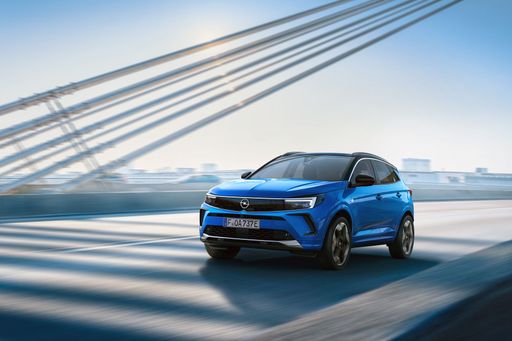 @ Opel / Stellantis Media
@ Opel / Stellantis Media
Vauxhall Grandland
Hyundai Bayon
The Hyundai Bayon slips neatly between city runabout and small SUV, offering surprising practicality and a fresh, confident design that stands out in urban traffic. It's an easy buy for shoppers who want smart packaging, tidy handling and a dash of personality without fuss — a sensible little crossover that makes everyday driving a bit more enjoyable.
details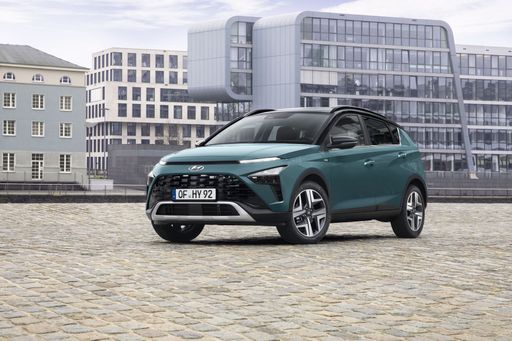 @ Hyundai Motor Company
@ Hyundai Motor Company
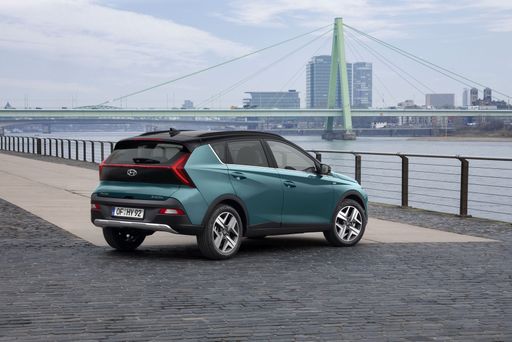 @ Hyundai Motor Company
@ Hyundai Motor Company
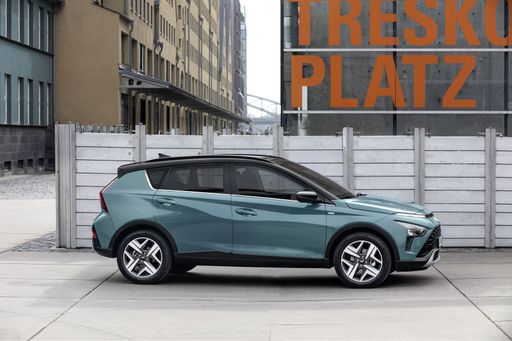 @ Hyundai Motor Company
@ Hyundai Motor Company
 @ Hyundai Motor Company
@ Hyundai Motor Company
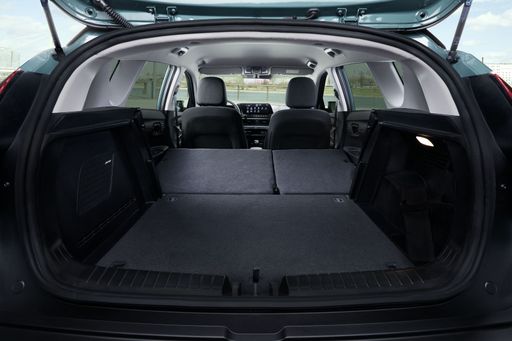 @ Hyundai Motor Company
@ Hyundai Motor Company
Vauxhall Grandland
The Opel Grandland feels like a sensible, well-rounded SUV — neat styling, a spacious cabin and a composed ride that turns daily driving into a quietly pleasant experience. It’s a smart choice for buyers who want modern tech, good economy and a dash of German practicality without shouting for attention.
details @ Opel / Stellantis Media
@ Opel / Stellantis Media
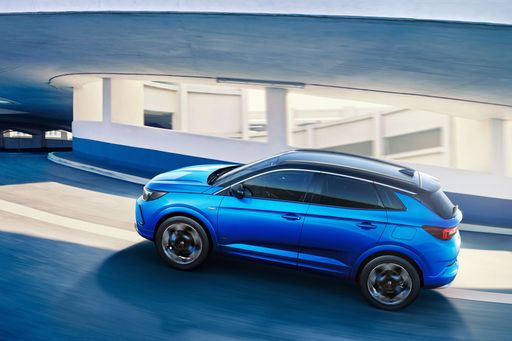 @ Opel / Stellantis Media
@ Opel / Stellantis Media
 @ Opel / Stellantis Media
@ Opel / Stellantis Media
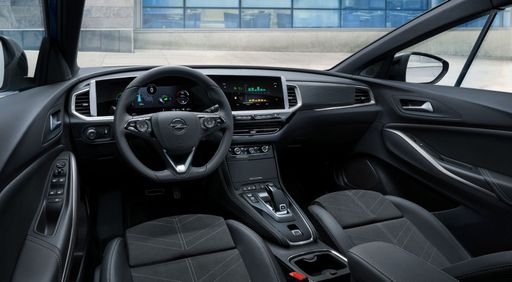 @ Opel / Stellantis Media
@ Opel / Stellantis Media
 @ Hyundai Motor Company
@ Hyundai Motor Company
|
 @ Opel / Stellantis Media
@ Opel / Stellantis Media
|
|
|
|
Costs and Consumption |
|
|---|---|
|
Price
20100 - 25800 £
|
Price
32600 - 51400 £
|
|
Consumption L/100km
5.4 - 5.5 L
|
Consumption L/100km
2.6 - 5.6 L
|
|
Consumption kWh/100km
-
|
Consumption kWh/100km
17.8 - 18.6 kWh
|
|
Electric Range
-
|
Electric Range
82 - 694 km
|
|
Battery Capacity
-
|
Battery Capacity
-
|
|
co2
124 g/km
|
co2
0 - 126 g/km
|
|
Fuel tank capacity
40 L
|
Fuel tank capacity
55 L
|
Dimensions and Body |
|
|---|---|
|
Body Type
SUV
|
Body Type
SUV
|
|
Seats
5
|
Seats
5
|
|
Doors
5
|
Doors
5
|
|
Curb weight
1170 - 1195 kg
|
Curb weight
1675 - 2325 kg
|
|
Trunk capacity
411 L
|
Trunk capacity
485 - 550 L
|
|
Length
4180 mm
|
Length
4650 mm
|
|
Width
1775 mm
|
Width
1905 - 1934 mm
|
|
Height
1500 mm
|
Height
1665 mm
|
|
Max trunk capacity
1205 L
|
Max trunk capacity
1580 - 1645 L
|
|
Payload
460 - 465 kg
|
Payload
425 - 495 kg
|
Engine and Performance |
|
|---|---|
|
Engine Type
Petrol
|
Engine Type
Electric, Petrol MHEV, Plugin Hybrid
|
|
Transmission
Manuel, Automatic
|
Transmission
Automatic
|
|
Transmission Detail
Manual Gearbox, Dual-Clutch Automatic
|
Transmission Detail
Reduction Gearbox, Dual-Clutch Automatic
|
|
Drive Type
Front-Wheel Drive
|
Drive Type
Front-Wheel Drive, All-Wheel Drive
|
|
Power HP
100 HP
|
Power HP
145 - 325 HP
|
|
Acceleration 0-100km/h
11.3 - 12.4 s
|
Acceleration 0-100km/h
6.1 - 10.2 s
|
|
Max Speed
176 - 179 km/h
|
Max Speed
170 - 220 km/h
|
|
Torque
172 - 200 Nm
|
Torque
230 - 509 Nm
|
|
Number of Cylinders
3
|
Number of Cylinders
3 - 4
|
|
Power kW
74 kW
|
Power kW
107 - 239 kW
|
|
Engine capacity
998 cm3
|
Engine capacity
1199 - 1598 cm3
|
General |
|
|---|---|
|
Model Year
2024
|
Model Year
2024 - 2025
|
|
CO2 Efficiency Class
D
|
CO2 Efficiency Class
A, D, B
|
|
Brand
Hyundai
|
Brand
Vauxhall
|
What drivetrain options does the Hyundai Bayon have?
The Hyundai Bayon is available as Front-Wheel Drive.
The prices and data displayed are estimates based on German list prices and may vary by country. This information is not legally binding.
